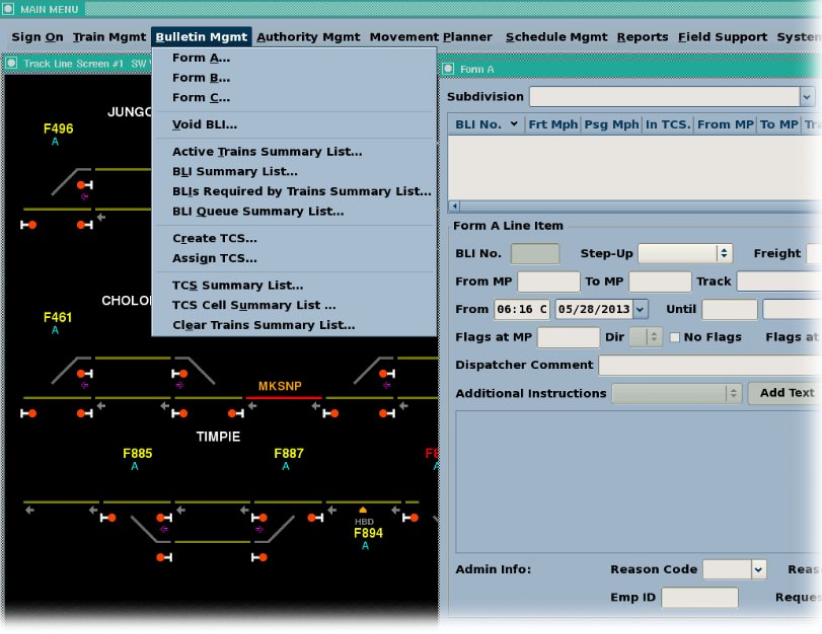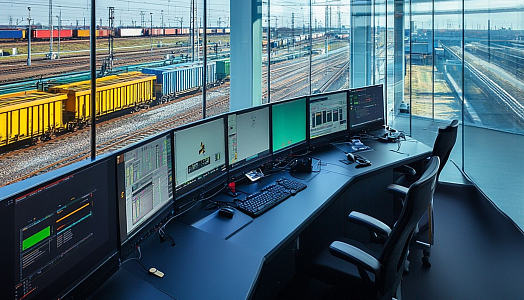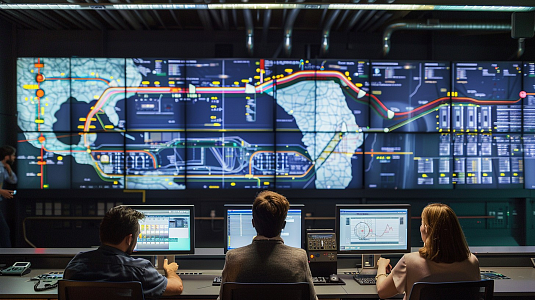Rail Dispatching System for Heavy Rail Network in US
Highlights
For almost 3 years, PSA developed and supported a Dispatching System for one of the biggest freight rail networks in North America. The customer intended to introduce Positive Train Control (PTC) over the whole network first and then adapt the system to the increased demand for rail freight transportation. The existing dispatching system didn’t allow for planning and updating the schedule automatically, and the need for keystroke input by dispatchers increased the probability of human error.
Challenge
Customer Challenge
Increase the capacity and capabilities of the heavy rail network and improve safety in all areas.
Project Objective
Enhance the control of train movements from a back office. Automate schedule and train route planning within a heavy rail network.
Solution
In order for the dispatcher to observe complete and reliable information on the track segment, train location, status of signals, and field devices, we expanded the functionality of the existing dispatching system by implementing new subsystems and updating the existing system.
The PSA team created rail signaling solutions by deploying the following features for the upgraded computer-aided dispatch:
- Planning of train movements and solving logistic issues in real time – considering factors such as speed, train weight, weather conditions, throughput, and so on
- Implementing a graphic representation of train movements over track sections
- Prioritization of visual and sound alarms and creation of alarm summary reports
- Manage authorities to occupy the rail network and tag conditions that affect its usage
- Track the status of signals, switches, and track circuits, as well as receive requests for maintenance from systems and technical staff
- Manage restrictions for the train and maintenance crew regarding train speed, size of the equipment, weather conditions, and so on; receive track conditions summary and exchange the dispatching messages
- Control signals and switches, as well as traffic flows
- Implementing a simulation environment to test the system and train dispatchers
To implement these new features, we built up a core of the dispatching system based on the existing subsystems. PSA also analyzed and enhanced requirements for the back-office, in order to provide a flexible traffic management approach for different rail operators. Our engineering team:
- Developed and tested new subsystems
Signal Maintenance to receive data from field equipment;
Optimized Train Planner: implementation of planning and optimization algorithms, as well as new functionality for application tasks; onsite support;
Isolated Simulation environment, imitating moving trains and field equipment.
- Resolved errors and added new functions to the existing subsystems: Alarm, Bulletin, Authority, and Train Management. Also, we ensured data exchange between dispatching, external systems, and updated GUI.
- Created a Visual Representation of rail sections, allowing for monitoring of tracks, trains, authorities, and signals.
- Integrated the newly-made system into the existing infrastructure.
As a result, dispatchers can monitor hundreds of trains operating over nearly half of the U.S. in real-time. The advanced back-office allows for tracking, planning, and controlling of train movement, status checks of tracks and wayside devices, and the implementation of Positive Train Control.
Development Included
- Detailed Design
- Software Requirements Specification Analysis
- Software and Database Development
- Unit Testing
- Test Cases Definition and Functional Testing
- UI design, implementation, and update
- Documentation Creation
- Follow-on Support
Results

-
Positive Train Control and Optimized Train Planner were introduced for 37,000 miles
-
Rail capacity has been increased by 25% while congestions were eliminated
-
Human errors were decreased by 75%







